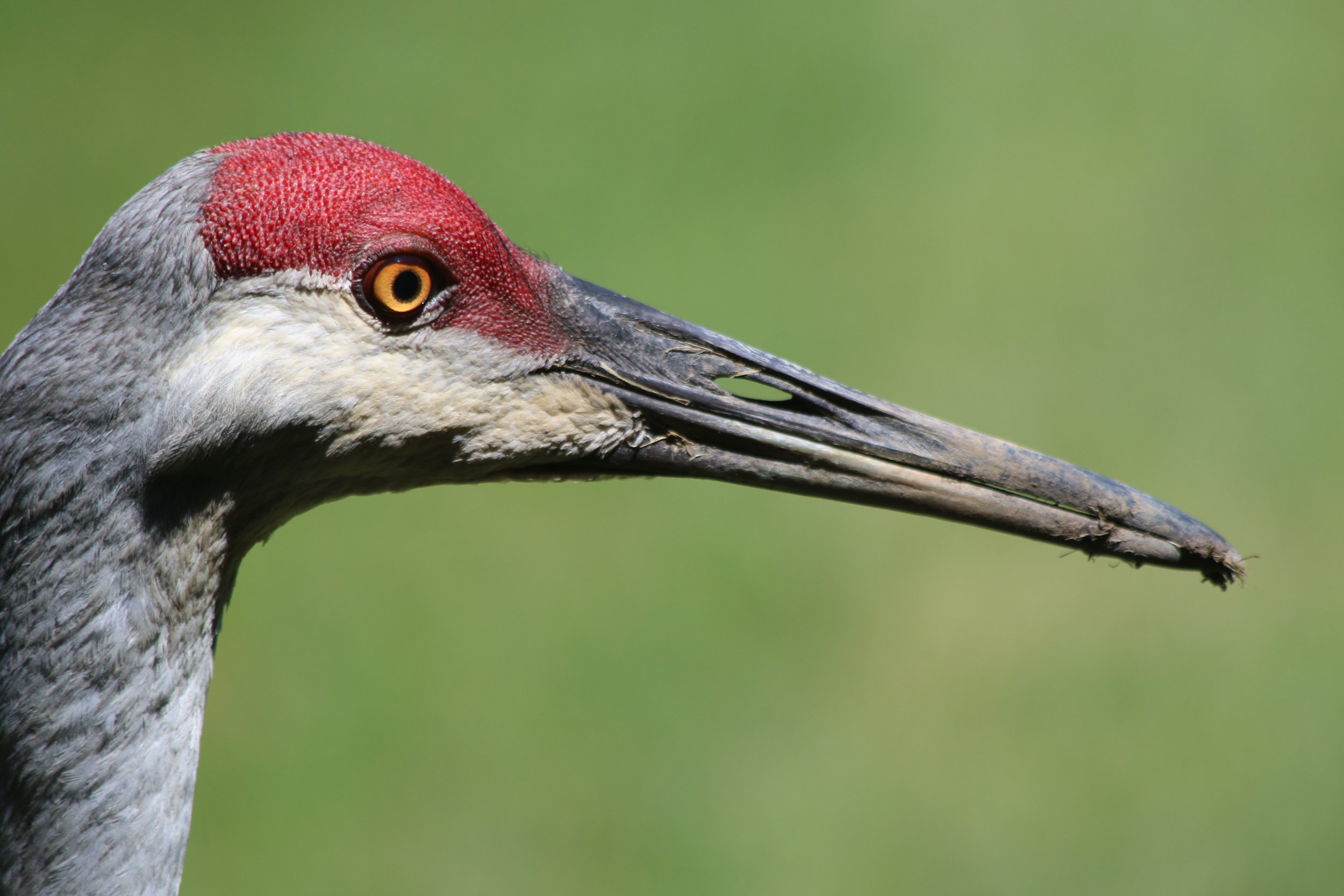Naturally
Colorful spring birds are part of nature’s sneaky plan to get us to pay attention.
If you're on a country road and see random lilac bushes, there was likely a house or farm there once. George Washington and Thomas Jefferson grew lilacs in their gardens. Margaret Millar wrote, “The smell of moist earth and lilacs hung in the air like wisps of the past and hints of the future.”
How big is hope? It’s the size of a hummingbird. I hope to see one each of the days they should be here. A pine siskin joined the goldfinches at the Nyjer feeder in my yard. It was welcomed with open beaks. A concert performed by whistling rose-breasted grosbeaks thrilled me. Those birds are said to sound like a robin that has had singing lessons.
A pair of red-headed woodpeckers continues to enjoy the complimentary breakfast provided by their humble servant each day. The scarlet tanagers landed and monarch butterflies fluttered by. A few warblers here and there—more there than here.
Air rushing over the Wilson's snipe's outspread tail feathers created the haunting hu-hu-hu winnowing sound. They usually produce the sound when they dive.
I heard “Look at me. Way up high. Over here. In a tree.” That’s a mnemonic for the red-eyed vireo. According to Guinness World Records, a red-eyed vireo holds the record for singing the most songs, with 22,197 sung in 10 hours.
Lake Sagatagan is in the St. John’s Abbey Arboretum. The surface area is 176 acres with a maximum depth of 40-42 feet. Lake Sag is a natural kettle or pothole lake with no direct water inputs or outputs and is recharged by underground springs plus rain and snow from the surrounding land. The lake was originally called Lake Saint Louis after King Louis of Bavaria and changed to Sagatagan, an Ojibwe word meaning punk or fungus outgrowth on trees used for tinder. I walked the trails there and listened blissfully to sandhill cranes calling back and forth, and hearing wood thrush sing, “Frito-Lay.” Aldo Leopold described the songs of a crane as, “High horns, low horns, silence, and finally pandemonium of trumpets, rattles, croaks, and cries that almost shakes the bog with its nearness, but without yet disclosing whence it comes.” In Greek mythology, the alphabet was said to have been invented by the god Mercury while observing cranes. Thoreau described the sound of the wood thrush this way, “It lifts and exhilarates me. It is inspiring. It changes all hours to an eternal morning." I took the time to feed the mosquitoes. My blood will grow baby mosquitoes that might bite me someday.
Q&A
“Who raises the most sunflowers?” North Dakota was the largest producer of sunflowers in the United States in 2022, followed by South Dakota and Minnesota. Russia and Ukraine are the two countries that grow the most sunflowers.
“Is the mourning dove the ‘rain crow’?” The yellow-billed cuckoo is a rain crow, sometimes called a storm crow because of the bird's habit of calling on hot days, often presaging thunderstorms. Merriam-Webster Unabridged Dictionary says rain crow is the black-billed or the yellow-billed cuckoo and the rain dove is a nickname for the mourning dove.
“The stripes on the heads of white-throated sparrows vary in color. Why?” The striking stripes on the heads of white-throated sparrows are white or tan. Author Pete Dunne said, “White-throated Sparrows come in two plumages—stunning and shabby.” The two color forms are genetically determined. The males prefer females with white stripes and the females prefer tan-striped males.
“When do wild turkeys nest?” The breeding season is April and May. Hens lay 8-15 eggs and don’t incubate until they lay the last egg. It takes 28 days to hatch and the chicks leave the nest within a day. The young, called poults, can fly in three or four weeks, but stay with their mother up to four months. Renesting after losing eggs is normal.
“Did ‘take a gander’ come from a gander?” The use of gander to mean look comes from the long, flexible neck of the goose (like a gooseneck lamp). A rubbernecking gander plays sentinel, craning his neck to examine any intruder.
Thanks for stopping by
“No man treats a motorcar as foolishly as he treats another human being. When the car will not go, he does not attribute its annoying behavior to sin; he does not say, ‘You are a wicked motorcar, and I shall not give you any more petrol until you go.’ He attempts to find out what is wrong and to set it right. An analogous way of treating human beings is, however, considered to be contrary to the truths of our holy religion.”—Bertrand Russell.
“Those who pass through life without stopping to admire the beauty, organization, melody or habits of birds rob themselves of a very great share of the pleasures of existence.”–Jacob Giraud.
Do good.
©️Al Batt 2023
“In all of North America, only a handful of animal calls have the power to stir the human soul as profoundly as these crane calls. The yodeling of loons on a northwoods lake, the bugling of elk across a misty meadow, the lugubrious howling of a wolf pack in a wilderness forest—these are sounds that bypass the ears to sink their teeth into a nerve deep within the listener, these and the ancient gurgling cries of cranes echoing over a dark river.”—“The Cry of the Sandhill Crane” by Steve Grooms. Photo by Al Batt.

